Green Engineering Design: Stand-Alone Solar Electric Systems
By Anna Gomberg - Senior Program Manager for Solar Education at We Share Solar
Are you keen to include more lessons on energy in your curriculum but are unsure where to start? Would you like to help your students understand the benefits of solar energy and get them interested in pursuing the plethora of careers offered in the booming industry?
A great place to start is by sharing data from your electricity bill - most utilities provide access to easily accessible data visualization tools that can be an excellent way to engage your students. The graphs shown here show changes in energy use for two weeks and one day, respectively. Many questions can be elicited from these graphs and you can begin to explore the meanings of units used to measure energy use. If you have solar at your home or school, this would also be a good source of data.
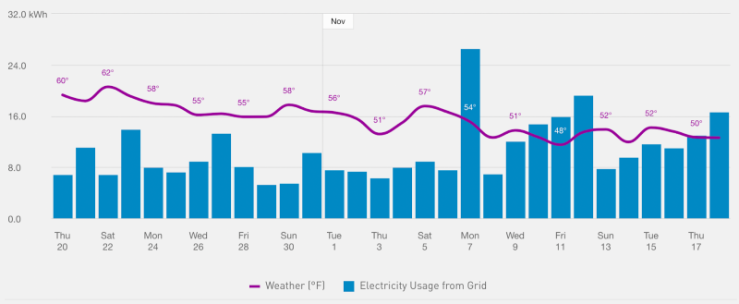
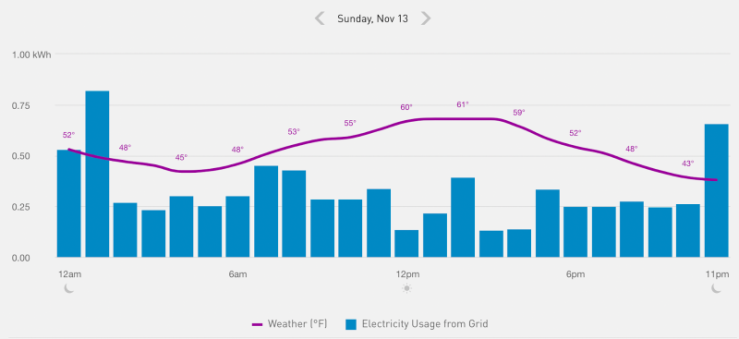
Students can then explore different types of solar electric systems, ranging from PV direct which can power a load such as a water pump during the day when the sun is out to microgrids that support whole communities. By learning about the different components needed to build these systems students can start using technical language and think about energy flow within a system. They can see the impact of a stand-alone solar electric system in rural communities in Kenya by watching this video.
To be able to explain the production and use of power and energy students need an understanding of units, scale, and quantity. By referring to the below power and energy scales students begin to grasp the difference between power (instantaneous) and energy (power produced or used over a period of time). Here teachers could engage their students in some simple mathematical calculations to compare the amounts of energy used by different loads over time and begin thinking about energy use in their own lives.
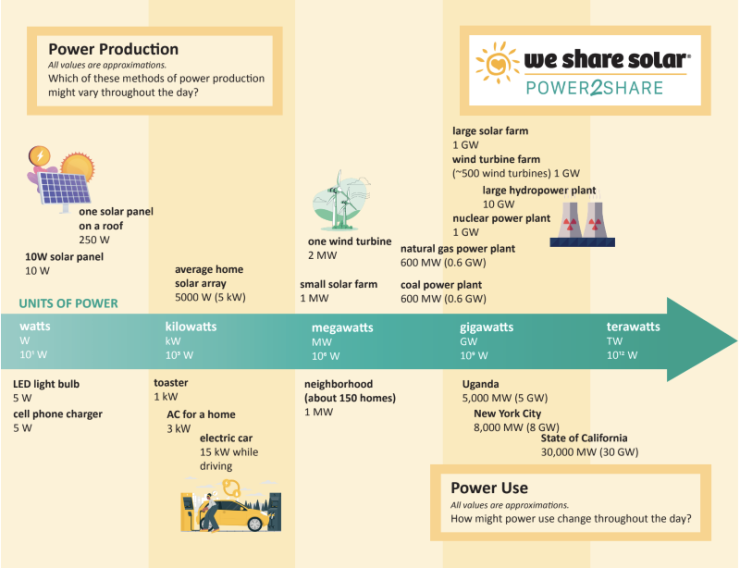
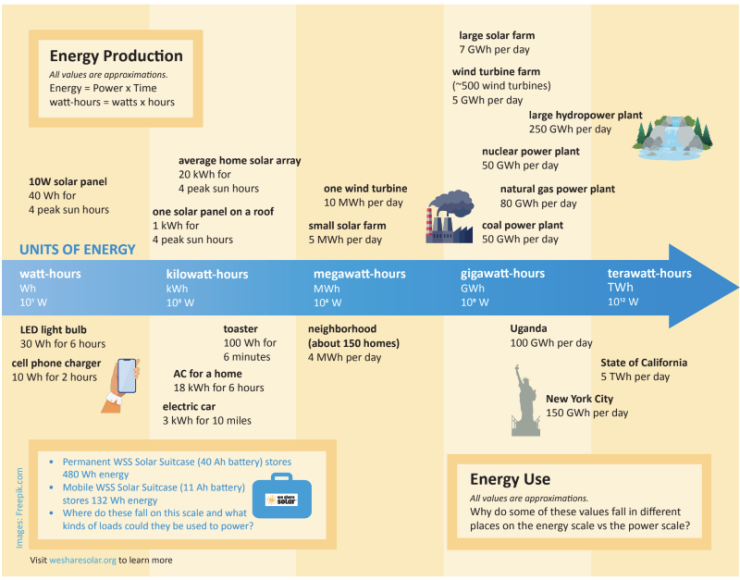
As an activity to elaborate on these concepts, students can be given the following scenario for an energy management simulation activity:
It is a hot sunny day and you got to school really early. You’re hanging out in your favorite teacher’s room when suddenly the apocalypse happens. You don’t know what’s happened yet but all the power is out and there is no internet or phone signal. Luckily you have a Solar Suitcase but the battery is empty. Until you can work out what has happened you are going to need to shelter in this room and will be here for the next 24 hours.
You can use the Solar Suitcase to:
- Charge a phone (20Whrs will fully charge it)
- Run a 30W fan
- Charge a headlamp (20Whrs will fully charge it)
- Power a 5W LED light
By following the steps listed in the activity small groups can think in detail about how to map out energy production and use over the course of the day, creating something similar to the graphs they will have seen at the start of the lesson. This requires some simple mathematical calculations to convert power to energy. By showing numeric quantities of energy as moveable tokens students can better grasp the meaning of energy as a concept.

Depending on the grade level and subject area students could then move on to mapping energy production and use in larger systems using their own graphs.
Finally, a simple way to evaluate student learning would be to give them some calculations to perform using power, time, and energy or to present to the class the mathematical reasoning they used to decide how to use the energy produced by the solar panels in the energy management simulation.
We Share Solar has been working with teachers across the country for the last decade to incorporate hands-on solar STEM education into their classrooms through grant-funded programs. Anna Gomberg, Senior Program Manager for Solar Education shares some resources and pedagogy that you can use with your students with or without access to our award-winning Solar Suitcase, following the 5E lesson plan structure and focusing on DCI PS3 (Energy), SEP 5 (Using mathematics and computational thinking) and CCC 3 (Scale, proportion and quantity).
For more information on We Share Solar visit our website and YouTube channel:
Access our FREE curriculum here (create a Thinkific account or sign in with Google)
View our slides from the 2023 California Science Education Conferenec session
Sign up for our newsletter and connect on social media here
About the Author
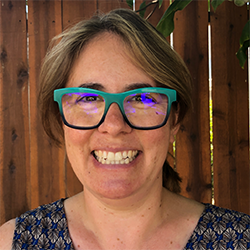
Anna Gomberg, a passionate Oakland Unified School District veteran Environmental Science teacher, has played a key role in both the creation of We Share Solar’s classroom curriculum and professional development workshop content. She has worked with researchers at the Lawrence Hall of Science to develop curriculum and teach for the National Science Foundation funded EPICC and YESS programs which both aimed to investigate ways of promoting STEM career opportunities and interest for low income youth of color using the Solar Suitcase as a key component. As Senior Program Manager for Solar Education at We Share Solar she is keen to expand access to the inspiring hands-on; climate justice and globally minded opportunities the curriculum provides. Anna grew up in the UK where she studied Materials Science at Oxford University as an undergraduate and remained to complete a Masters in Engineering (MEng); she then went on to train as a teacher at the University of London Institute of Education where she received a second Masters in Teaching (MTeach).






